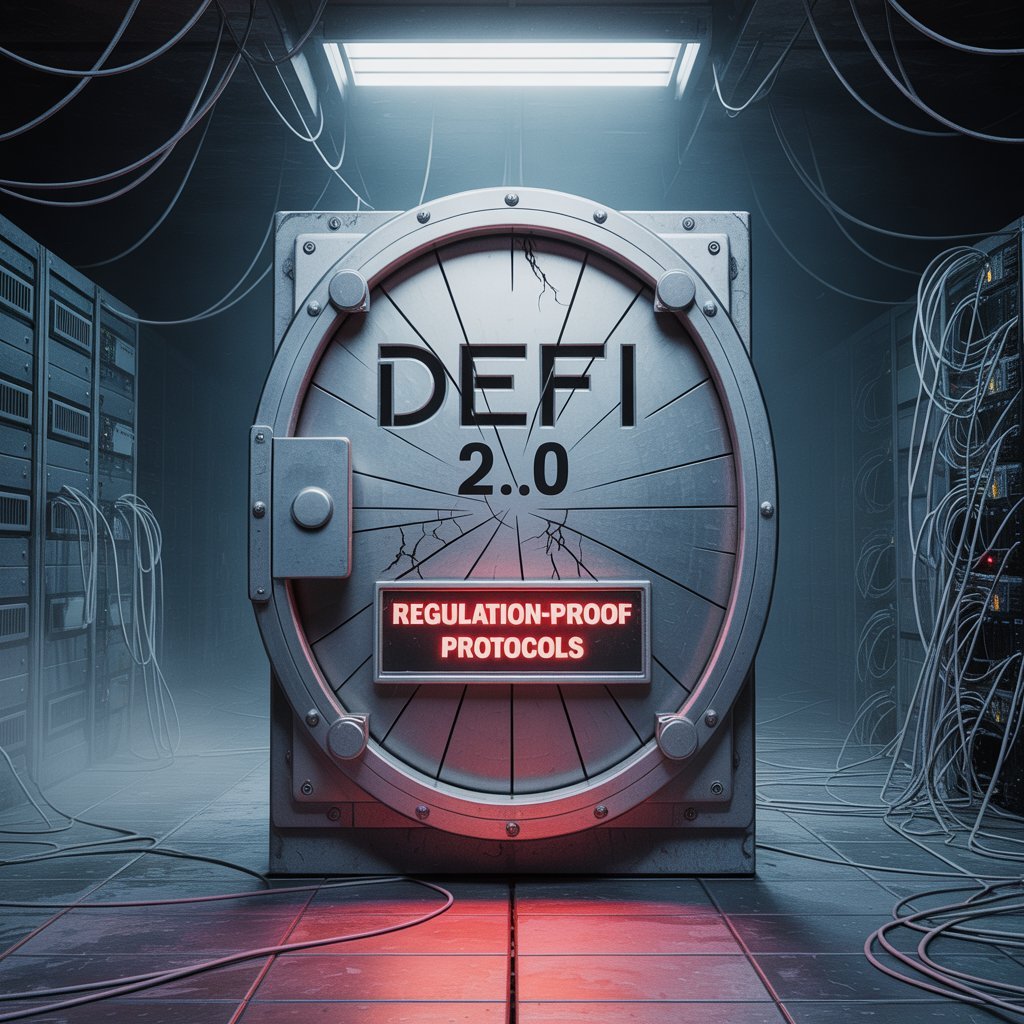1. Introduction: The Promise and Peril of DeFi 2.0
Decentralized Finance (DeFi) promised a revolution: a financial system without banks, borders, or bureaucrats. Now, DeFi 2.0 is doubling down protocols like Euler v2, Gearbox, and Ajna boast “regulation-proof” designs, eliminating intermediaries entirely. But beneath the hype lies a dangerous truth: these platforms have no safety nets.
Unlike traditional banks (backed by FDIC insurance) or even early DeFi 1.0 experiments (like Aave’s Safety Module), DeFi 2.0’s lending markets operate like algorithmic casinos where users can win big, but lose everything in a flash. The 2023 Euler Finance hack ($200M stolen, $0 recovered) was a warning shot. Yet, the industry is charging ahead, betting that censorship resistance trumps consumer protection.
This is DeFi’s dirty secret: the very features that make it “unstoppable” could trigger its collapse.
2. The Allure of ‘Regulation-Proof’ Lending
Why DeFi 2.0 Lending Is Different
DeFi 1.0 platforms (Compound, Aave) mimicked banks with overcollateralization and governance tokens. DeFi 2.0 protocols like Euler v2 go further:
- No legal entity – Developers deploy immutable code; no CEO to subpoena.
- No KYC – Anonymous users interact via wallets, evading AML laws.
- Algorithmic risk management – Interest rates adjust dynamically, with no human oversight.
Who’s Using This—And Why?
- Degens: Chase higher yields than Aave/Compound offer.
- Institutions: Avoid compliance costs (e.g., Genesis’ $2B DeFi loans pre-bankruptcy).
- Crypto-natives: Ideological belief in “code is law” over government safeguards.
But the trade-off is stark: No insurance, no bailouts, no recourse when things go wrong.
3. The Hidden Risks of Uninsured Lending
Case Study: Euler Finance’s $200M Disaster
In March 2023, Euler Finance, a “non-custodial” lending protocol was drained in a flash loan attack. Unlike centralized exchanges (which sometimes reimburse users), Euler had no insurance fund. Victims included:
- Retail depositors (lost life savings)
- DAOs (TempleDAO wiped out)
- Other protocols (cascading liquidations)
Euler v2 now markets itself as “more secure,” but it still lacks depositor protection.
Systemic Risks of Unsecured DeFi
- Undercollateralized Time Bombs
- Platforms like Gearbox allow 10x leverage. One market crash = instant insolvency.
- Oracle Manipulation
- If a price feed is hacked (e.g., Chainlink delay), loans liquidate unfairly.
- MEV (Miner Extractable Value) Attacks
- Bots can front-run transactions, stealing funds before users react.
Worst-case scenario? A DeFi “bank run” where panic withdrawals crash the system and no lender of last resort exists.
4. Why Regulators Are Powerless (For Now)
The SEC’s Dilemma
Gary Gensler calls DeFi “the Wild West,” but how do you regulate a protocol with:
- No headquarters? (Developers work anonymously.)
- No legal entity? (Smart contracts can’t be sued.)
- No user identification? (Just wallet addresses.)
Jurisdictional Arbitrage
- Devs in crypto havens (Switzerland, Cayman Islands).
- Users globally (unenforceable cross-border laws).
The “Lehman Moment” Threat
If a major DeFi lender collapses, contagion could spread to:
- CeFi (Celsius, BlockFi were heavily exposed to DeFi).
- TradFi (BlackRock’s tokenized fund collateralized via DeFi).
Regulators are stuck: Crack down, and they kill innovation. Do nothing, and risk a meltdown.
5. The Post-Quantum Business Threat
Quantum Computing’s Looming Shadow
Most DeFi relies on ECDSA cryptography, the same tech securing Bitcoin wallets. Quantum computers could break it within a decade.
Why DeFi 2.0 Is Especially Vulnerable
- No recovery mechanisms: If private keys are cracked, funds are gone forever.
- No “undo” button: Immutable smart contracts can’t reverse theft.
Imagine this: A quantum attack drains Euler v2. Unlike a bank hack, there’s no FDIC, no lawsuits, just a GitHub repo and a “sorry” tweet.
6. Solutions—Or Lack Thereof
Option 1: On-Chain Insurance (Flawed)
- Nexus Mutual, Uno Re offer coverage, but:
- Limited liquidity (can’t cover billions).
- Claims often disputed (e.g., Axie Infinite’s $600M hack).
Option 2: DAO Bailout Funds (Centralization Trade-Offs)
- Aave’s Safety Module uses staked tokens as a backstop.
- But: If Aave crashes, the fund collapses too.
Option 3: Hybrid Regulation (The Best Worst Option?)
Singapore’s “risk-based” approach forces some KYC for large DeFi pools. But:
- DeFi maximalists scream “censorship!”
- Enforcement is patchy.
Reality: There’s no perfect fix—only trade-offs.
7. Conclusion: DeFi’s Fragile Future
DeFi 2.0 is a double-edged sword: Financial freedom vs. financial fragility. The next crisis won’t be a “bug” it’ll be a feature of “regulation-proof” design.
The Billion-Dollar Question:
Should DeFi users:
- Demand insurance, even if it means centralization?
- Accept the risks, knowing they could lose everything?
One thing’s certain: The industry can’t keep pretending the risks don’t exist.





